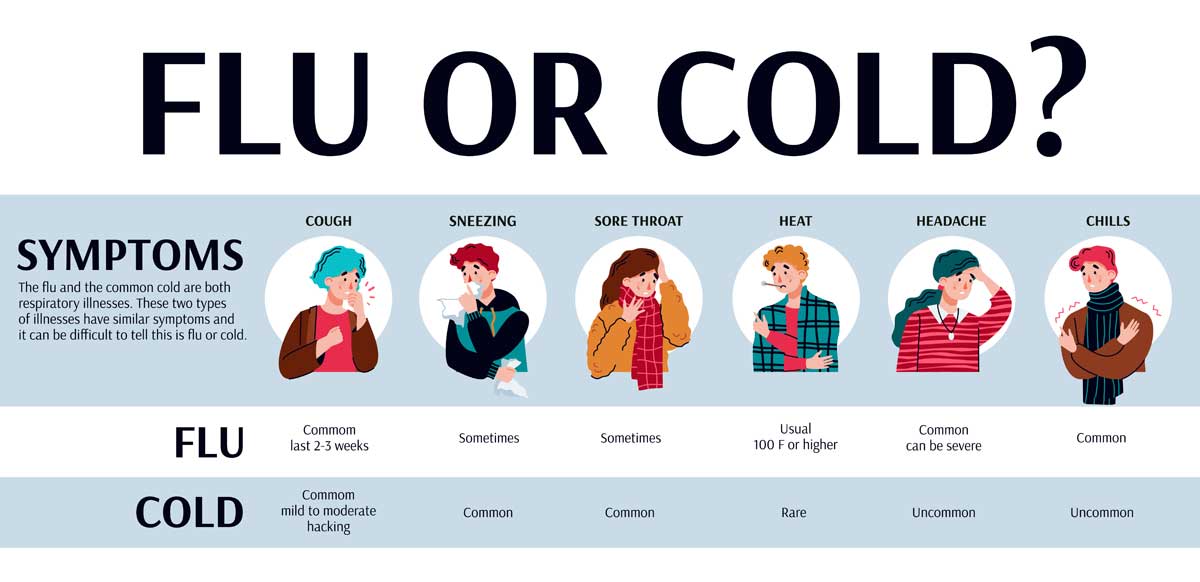So, you’ve just woken up with a killer headache, you feel feverish, and you can’t stop sneezing and coughing. It’s the flu. Or is it? Maybe it’s a cold. How does anyone know the difference?
It can sometimes be hard to tell which is which because colds and flu can have many of the same symptoms. But in general, a cold is a milder illness that is only bad for a day or two, with mild symptoms lingering for a week or longer. The flu, on the other hand, can send you to bed for the better part of a week, with the tired feeling lasting sometimes a few weeks more.
Colds usually clear up with no lasting problems. But the flu can lead to serious complications, such as pneumonia and bacterial infections. This year, about 2,000 to 8,000 people will die from the flu. Those most at risk include kids under two-year-old, the elderly, those with lung problems, and those with diabetes and other chronic conditions.
The flu can also be dangerous to those who are very obese. So, if the symptoms of colds and the flu can appear at the same, how do you tell? The main hallmark symptoms of the flu are a fever and a cough. Most of us don’t develop a fever with a cold and if we do, it’s mild. But the flu almost always brings on a fever lasting 2 to 4 days. If you have a fever and a cough and one of the following, you probably have the flu:
- Fatigue,
- Muscle aches,
- Sore throat,
- Headache,
- Decreased appetite.
Vomiting is generally not a symptom of the flu (more on that below), though kids are the exception. In them, the fever that comes with the flu can cause kids to feel nauseous and to vomit. While these are the general guidelines for distinguishing colds and flu in healthy adults, infectious diseases expert Dr. Neil Rau says there are always exceptions.
Kids sometimes develop a mild fever with just a common cold, while the elderly may not have a fever at all with the flu. That’s because the immune systems of the elderly tend to be weaker, which leaves them with a decreased ability to generate body heat. Rau says one way to tell if it’s a cold or the flu is to ask yourself how long the illness took to come on. The flu usually comes on suddenly, while a cold can take a day or two to really rear its head.
“A cold usually starts as some sneezing at first and runny nose, then maybe a sore throat the next day. With the flu, you usually get hit with all symptoms – fever, cough, fatigue, headache – all at once,” he says. Another way to decide if you have the flu is to know about the flu activity in your area, says Rau. “The chance increases if you have widespread fly activity. So, you have to look at what’s happening,” he says.
For most parts of Canada, flu activity starts to pick up at Christmastime. It seems to begin circulating in schools a bit earlier that that, though, Rau adds. So how do you know if there’s a lot of flu going around in your areas?
Your local public health office can likely tell you, but the Public Health Agency of Canada also puts out a cross-country flu activity report every week that’s easily found online.






